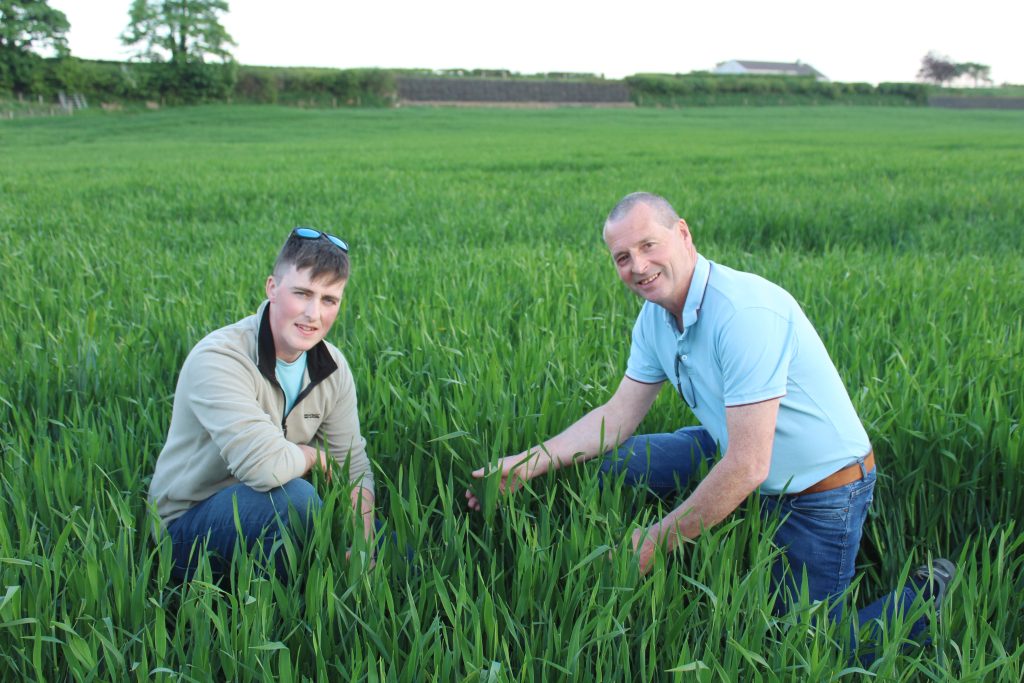Getting magnesium and manganese on to spring barley crops has been highlighted as a May Bank Holiday tillage priority by tillage specialists.
Specifically, where magnesium is concerned, barley crops are seeking to push through their growth stages at an enhanced rate.
However, the cool night-time temperatures that still characterise this time of the year mean that individual plants cannot source the soil’s magnesium reserves quickly enough.
Teagasc tillage specialist, Shay Phelan, said: “Magnesium is a critical component of chlorophyll. Signs of deficiency show up as yellow edging on leaves.
“However, an application of Epsom salts will quickly address the issue.”
Phelan attended a recent crops walk, hosted by Limavady cereal grower, Andrew Blair. The event had been hosted by the College of Agriculture, Food and Rural Enterprise (CAFRE) as a forerunner to the establishment of new farm Business Sustainability Groups (BSGs).

Phelan also confirmed the necessity of getting a fungicide treatment on to winter barley crops at the ‘awns peeping’ stage.
“Many crops will be reaching this stage on their development over the coming days,” he said.
Phelan said the aim is to control ramularia, which is the disease that can cause most damage to winter barley crops from now though until harvest.
“One spray application will suffice at this stage. But it has got to be timed properly,” he said.
“Repeated Teagasc trials have confirmed the rationale of a two spray fungicide programme on winter barley crops.
“The first spray will target the likes of net blotch and Rhynchosporium. After that the focus switches to ramularia control.”
The Teagasc representative further explained why treating winter crops at this stage is so important.
“Unlike wheat, where yield develops in the crop canopy as the crop progresses, winter barley have crops amassed all their output potential in the tillers that have developed over recent weeks.
“The priority over the coming days is to protect the yield potential that now exists within the barley plants.
“This is why getting an effective application on to barley at the awns peeping stage is so important,” Phelan said.
Significantly, the weather is set fair for the coming days. Ground conditions are already good. So there is every opportunity for tillage farmers to get on with field work in an unhindered manner.

Andrew Blair farms close to Limavady in Co. Derry. This year he is growing both six-row hybrid and conventional two-row winter barley varieties.
His hybrid crop has received three plant growth regulator applications over recent weeks.
September drilled, all his winter barleys are looking tremendously well at the present time. Andrew makes optimal use of animal manures and composts on all his cropping land.

